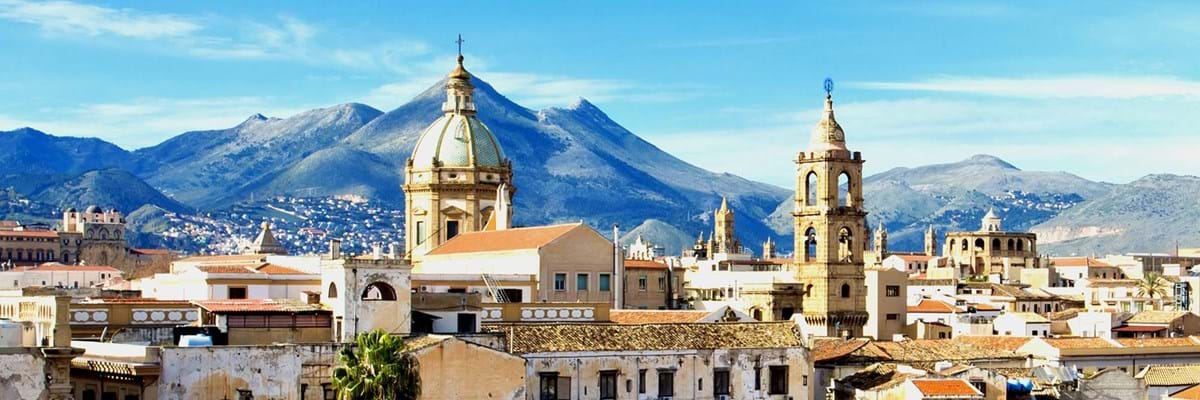Offering spectacular scenery, architectural wonders and sweeping beaches that has attracted the elite for years.
Description
Sicily holidays boast spectacular scenery, architectural wonders and sweeping beaches, which have attracted the elite since it became part of the European Grand Tour. As an island that represents three continents in its history, cuisine, language and even the citizens themselves, The characters of Sicily are as varied as their ancestry.
Throughout the years the island is a host to numerous cultural, artistic and religious events. Just like the Greeks, Easter and Christmas are celebrated with much gusto. Every town or village has a patron saint and commemorates their name day with fireworks, eating and drinking. The culture here is one that must be experienced as it is so unique and memorable.
Opera and classical music are also popular in Sicily, with Palermo boasting the biggest opera house in Italy, Teatro Massimo. The superb Taormina Greek Theatre, is blessed with the impressive backdrop of Mount Etna, and has an impressive summer schedule every year, which includes concerts and operas featuring international artists. Popular artists, such as James Blunt, have appeared here in recent years.
For those who adore art, there are many excellent art galleries around the island. The most noteworthy is to be found in Palermo, the Galleria Regionale della Sicilia, the Galleria d'Arte Moderna and the new Museo Regionale d'Arte Moderna e Contemporanea della Sicilia.
Things To See
Founded in 528 BC, Agrigento is one of the most important cities of the Mediterranean. The temples, which are included in the UNESCO World Heritage List in 1997, are set in the valley below the modern town. To the right of the Aurea gate, stands the Temple of Olympian Zeus and around it is a large sacred area where the Temple of Castor and Pollux stand with characteristic angular columns.
On the east coast of Sicily, in the metropolitan city of Catania, lies the tallest active volcano in Europe, Il Monte Etna. This is said to be one of the most emblematic volcanoes in the world, which has been part of the World Heritage List since 2013. Earthquakes and lava flows have changed the landscape continuously, however has also generated extraordinary fertile territory, giving life to precious agricultural crops.
In the southeast of Sicily lies the Necropolis of Pantalica, a collection of cemeteries with rock-out chamber tombs dating from the 7th to the 13th centuries BC.
Weather
August is the hottest month in Palermo with an average temperature of 28°C (82°F) and the coldest is January at 13°C (55°F) with the most daily sunshine hours at 14 in July. The wettest month is October with an average of 102mm of rain.
| Jan | Feb | Mar | Apr | May | Jun | Jul | Aug | Sep | Oct | Nov | Dec | |
| Palermo | 13 | 13 | 15 | 16 | 20 | 25 | 28 | 28 | 25 | 21 | 17 | 14 |
| London | 6 | 7 | 10 | 13 | 17 | 20 | 22 | 21 | 19 | 14 | 10 | 7 |
| Jan | Feb | Mar | Apr | May | Jun | Jul | Aug | Sep | Oct | Nov | Dec | |
| Palermo | 6 | 8 | 9 | 10 | 12 | 13 | 14 | 13 | 10 | 8 | 8 | 7 |
| London | 1 | 2 | 4 | 5 | 6 | 7 | 6 | 6 | 5 | 3 | 2 | 1 |



